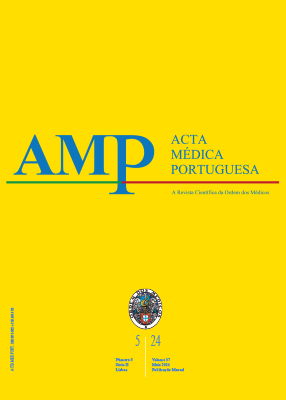Coping with Gender Dysphoria in a Rural Environment during Adolescence
DOI:
https://doi.org/10.20344/amp.19731Keywords:
Adolescent, Gender Dysphoria, Gender Identity, Rural PopulationAbstract
Gender dysphoria is socially more visible and discussed today, but still underdiagnosed. It refers to distress and/or impaired function caused by inconsistency between the sex assigned at birth and gender identification. Clinical manifestations are variable. Lack of training and investment in gender issues make the diagnosis and management in primary care complex, particularly in conservative and isolated communities, with poor access to information and specialized health services. We describe the diagnosis of gender dysphoria and use of a patient centered multidisciplinary and family approach in a 12-year-old rural born adolescent, assigned female at birth. Our aim is to raise awareness of early symptoms and signs of gender dysphoria and problems faced by transgender people and their families during childhood, leading to gender dysphoria, and we hope our successful approach might improve healthcare provision for these patients, particularly in rural areas.
Downloads
References
American Psychiatric Association. Diagnostic and Statistical Manual of Mental Disorders. 5th ed. Washington DC; APA: 2022. DOI: https://doi.org/10.1176/appi.books.9780890425787
Forcier M, Olson-Kennedy J. Gender development and clinical presentation of gender diversity in children and adolescents. [cited 2022 Oct 13]. Available from: https://www.uptodate.com/contents/gender-development-and-clinical-presentation-of-gender-diversity-in-children-and-adolescents.
Malpas J. Between pink and blue: a multi-dimensional family approach to gender nonconforming children and their families. Fam Process. 2011;4:453-70. DOI: https://doi.org/10.1111/j.1545-5300.2011.01371.x
National Health Service. Gender dysphoria. 2020. [cited 2022 Oct 13]. Available from: https://www.nhs.uk/conditions/gender-dysphoria/.
Kaltiala-Heino R, Bergman H, Tyolajarvi M, Frisén L. Gender dysphoria in adolescence: current perspectives. Adolesc Health Med Ther. 2018;9:31-41. DOI: https://doi.org/10.2147/AHMT.S135432
Olson J, Forbes C, Belzer M. Management of the transgender adolescent. Arch Pediatr Adolesc Med. 2011;165:171-6. DOI: https://doi.org/10.1001/archpediatrics.2010.275
Fridell SR, Owen-Anderson A, Johnson LL, Bradley SJ, Zucker KJ. The playmate and play style preferences structured interview: a comparison of children with gender identity disorder and controls. Arch Sex Behav. 2006;35:729-37. DOI: https://doi.org/10.1007/s10508-006-9085-8
Wallien MS, Cohen-Kattenis PT. Psychosexual outcome of gender-dysphoric children. J Am Acad Child Adolesc Psychiatry. 2008;47:1413-23. DOI: https://doi.org/10.1097/CHI.0b013e31818956b9
Steensma TD, McGuire JK, Kreukels BP, Beekman AJ, Cohen-Kettenis PT. Factors associated with desistence and persistence of childhood gender dysphoria: a quantitative follow-up study. J Am Acad Child Adolesc Psychiatry. 2013;52:582-90. DOI: https://doi.org/10.1016/j.jaac.2013.03.016
Prasad G, Aparna B. A case report of gender dysphoria with morbid jealousy in a natal female. Indian J Psychol Med. 2017;39:800-2. DOI: https://doi.org/10.4103/0253-7176.219643
Anderson H. Rural transgender and gender-nonconforming individuals’ experiences with social media during adolescence. Minneapolis; Walden University: 2019.
Downloads
Published
How to Cite
Issue
Section
License
Copyright (c) 2024 Acta Médica Portuguesa

This work is licensed under a Creative Commons Attribution-NonCommercial 4.0 International License.
All the articles published in the AMP are open access and comply with the requirements of funding agencies or academic institutions. The AMP is governed by the terms of the Creative Commons ‘Attribution – Non-Commercial Use - (CC-BY-NC)’ license, regarding the use by third parties.
It is the author’s responsibility to obtain approval for the reproduction of figures, tables, etc. from other publications.
Upon acceptance of an article for publication, the authors will be asked to complete the ICMJE “Copyright Liability and Copyright Sharing Statement “(http://www.actamedicaportuguesa.com/info/AMP-NormasPublicacao.pdf) and the “Declaration of Potential Conflicts of Interest” (http:// www.icmje.org/conflicts-of-interest). An e-mail will be sent to the corresponding author to acknowledge receipt of the manuscript.
After publication, the authors are authorised to make their articles available in repositories of their institutions of origin, as long as they always mention where they were published and according to the Creative Commons license.









